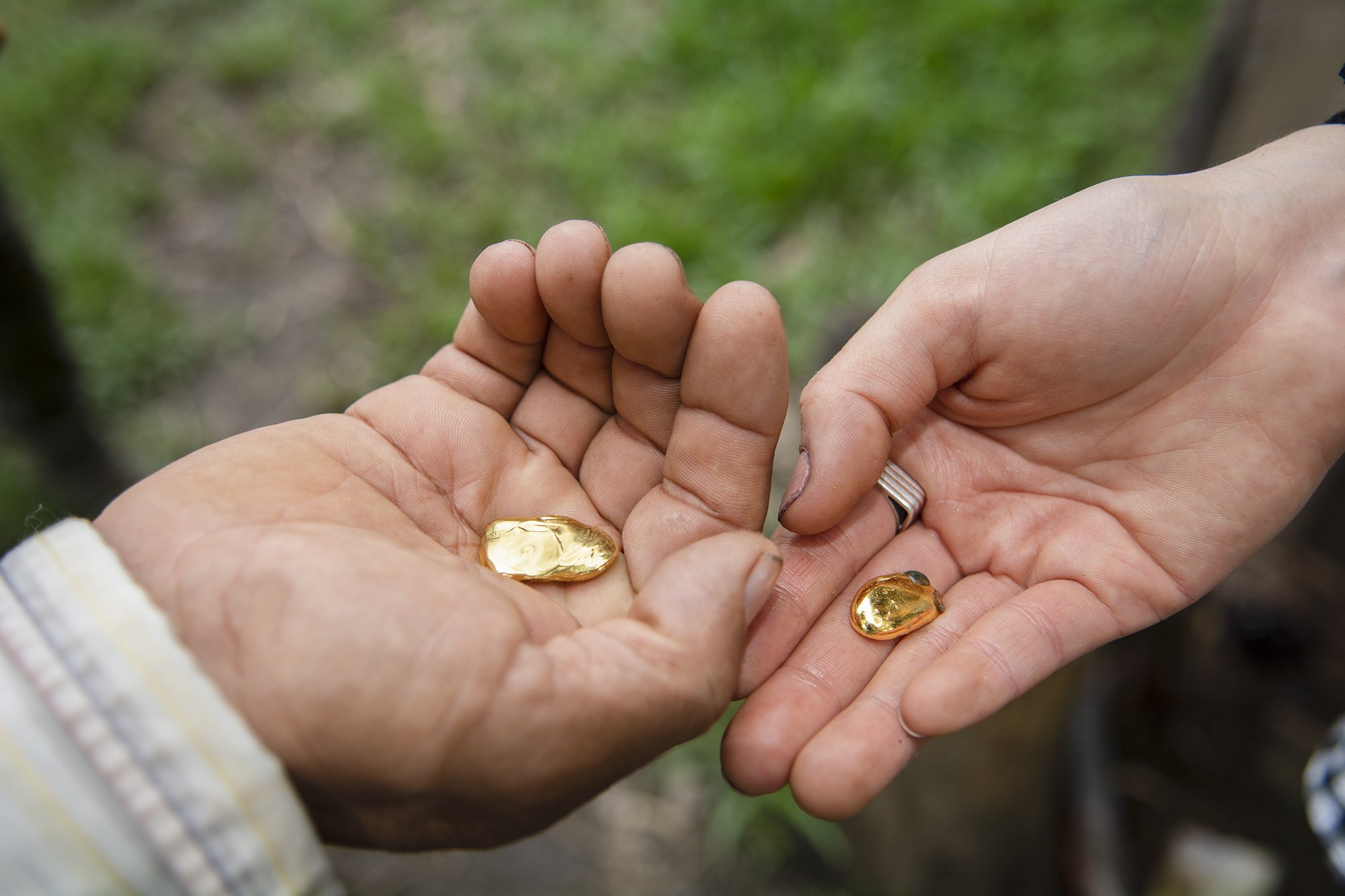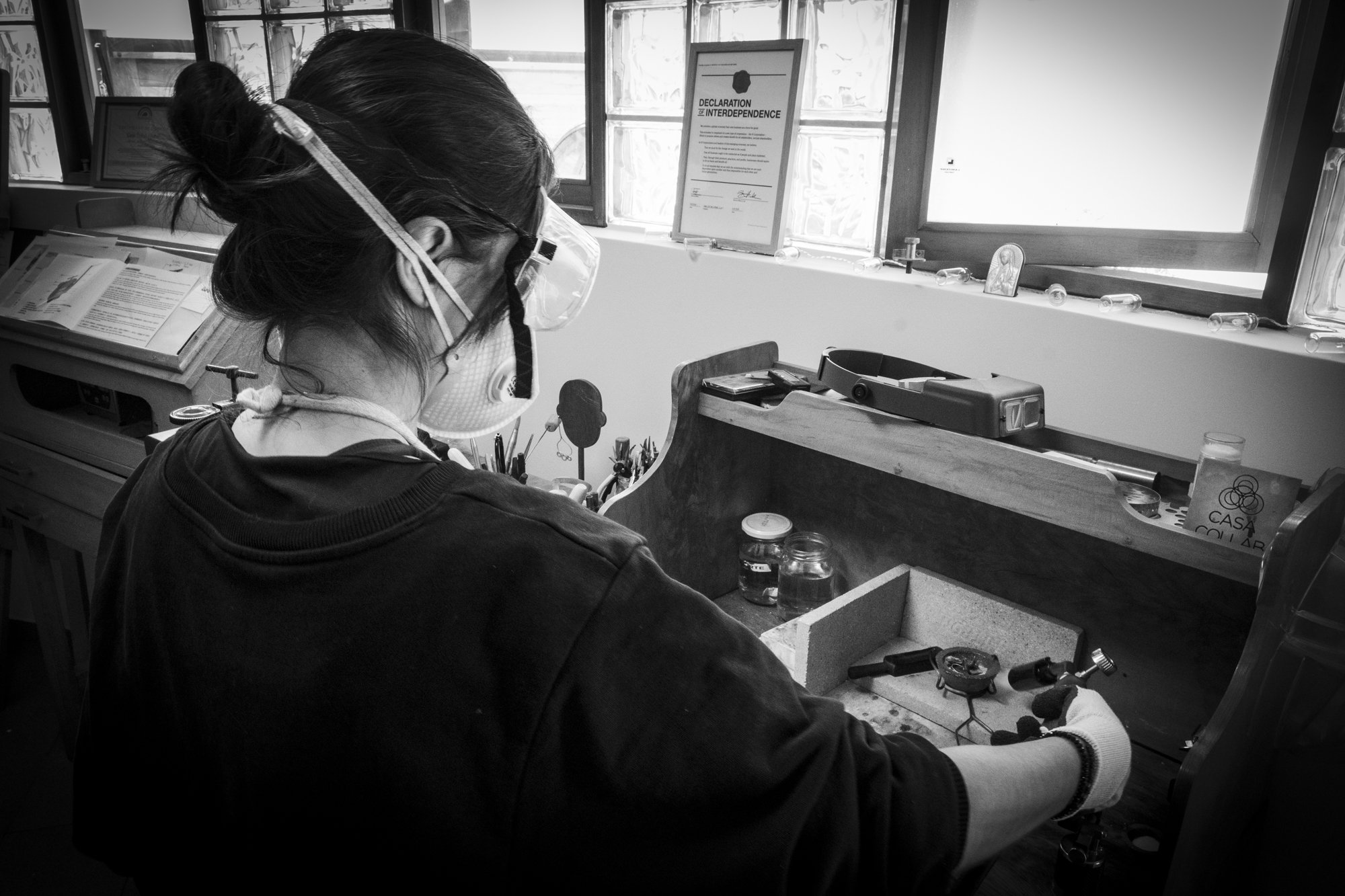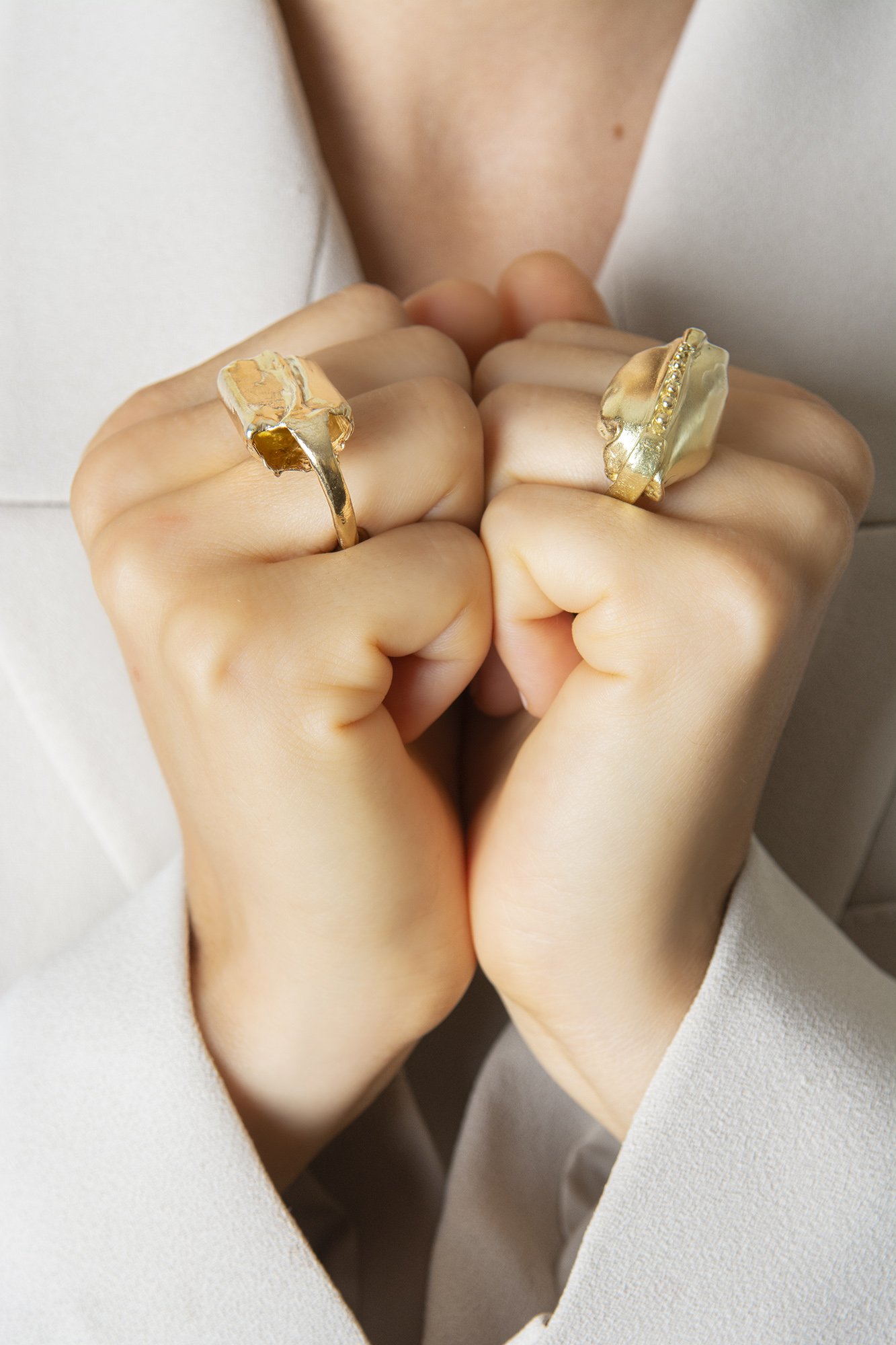Andrea Jose Castro, Peru
"It is us, the consumers and buyers of gold, that have not been worrying about where our gold comes from and if we were depredating the Amazon.”
Andrea Jose Castro
Founder and General Manager
Casa Collab
Lima, Peru
Andrea Jose Castro, Founder and General Manager of Casa Collab, a responsible jewelry company, shares her experience promoting the production and commercialization of clean gold in the jewelry industry.
Can you briefly describe your work or experience expertise related to ASGM in the Amazon?
I am a Business Engineer from Universidad del Pacifico (Lima, Peru), and I dedicated a few professional years to working on social impact projects for corporations and large companies.
At one point, I decided to quit my job because of a passion that came from when I was a child, which is jewelry. I have a Master's degree in design from Central Saint Martins University in London, and I am currently the Founder and General Manager of Casa Collab, which is a responsible jewelry venture here in Peru, and at the same time, Creative Director of my brand with my name: Andrea Jose Designs. I currently live in Lima, my workshop is also located here.
Andrea at her workshop in Lima, Peru.
Photo courtesy of Andrea Jose Castro.
How did you first get involved in this work?
My encounter with ASM in the Amazon came from my own questioning of wanting to develop an artisanal mining model that is responsible in the area. Mainly because I knew that this practice has been carried out for thousands of years, there are even records from the time of the Incas in which this activity is illustrated. But certain changes throughout history have led to practices that are not the best for mining in an area as delicate and also as important for the world as the Amazon.
My encounter came from research I did as part of my postgraduate studies at the Central Saint Martins University, to achieve a model of responsible artisanal mining in Peru.
In 2019 I made my first field visit where I met Mr. Pedro Ynfante with whom we developed a close collaboration to ensure that he can start selling mercury-free gold, which comes from his own reforested concessions in Madre de Dios.
From there, and thanks to the NGO Pure Earth, which has been training miners in different areas of the region, I was also able to meet Vilma Contreras, leader of the AMATAF association. This association has miners active in the issue of mercury-free gold production whom I have had the opportunity to train, just as I did at the beginning with Pedro Ynfante.
I got involved because of my own questioning as a jeweler. I certainly felt the responsibility to support and achieve the generation of a new responsible ASM model in the Amazon, but also through collaborations.
One of the pillars of my work since I started my business six years ago is collaboration. This is where the name of my company comes from: Collab. I have always believed that by generating alliances, associations and collaborations we are able to develop more responsible value chains for the jewelry industry.
Andrea with Vilma Contreras and members of AMATAF , Madre de Dios, Peru.
Photos courtesy of Andrea Jose Castro.
Would you like to share some anecdotes about your work?
Having started doing this work in the Amazon has had quite a few very particular experiences, but I think a big surprise was when I met Pedro Infantes. I was surprised that he did not actually market his mercury-free gold in the Amazon, and he could not sell it if he did not put mercury in it.
I think this opened up a series of questions and is what led me to find a way to work more closely with him and be his first mercury-free gold buyer.
This was an important milestone for him, and it was what made other miners in the same area want to sell and buy this type of gold, as well as encourage a reforestation commitment. I think that having a dialogue between the miner and the local jeweler has been a very important achievement, because there is a different connection when we feel a commitment to our country and our heritage, which in this case is in the Amazon. It is a different way to “build” our nation.
Andrea with Pedro Ynfante in Madre de Dios, Peru.
Photo courtesy of Andrea Jose Castro.
Are there new developments or research related to the current state of ASM that you would like to share with innovators working in the field?
Innovations in ASM are currently entering the Amazon and I believe that this, in turn, has a multiplier effect. It is truly incredible how in Madre de Dios there is an important role that is being developed among the women miners themselves and I think that for me is something truly relevant because it is the women miners who are certainly taking the lead to make mining more responsible and with better practices. This is beneficial for their families, their communities, the tribes they are in, but also for the ecosystem of the entire area.
Women miners are standing up and taking the lead to multiply this new movement that we started with Mrs. Vilma Contreras last year and now it is a new wave of responsible mining.
In your opinion, which problem or problems related to gold ASM in the Amazon need to be solved most urgently?
I have always supported the development of an ASM responsible market, and generating a complete clean value chain. I think that we have only been looking at and criticizing the miners, even accusing them, but in reality the problem has not only been them, but also the demand: it is us, the consumers and buyers of gold that have not been worrying about where our gold comes from and if we were depredating the Amazon.
In addition, we have not worried whether the miners have the right conditions to work, which they need, both to work and to sell their gold. The barriers to enter the market that have been placed by government regulations that do not facilitate the commercialization of clean gold without mercury and without blood are very high. So, small miners who want to do the work to support their families and communities are not managing to sell their gold in the way that they should be able to. We need to open this market, and regulate it properly.
In my opinion, the main barriers today are the market and the regulations they have.
What do you think are the biggest innovation opportunities for ASGM in the region?
I think the fundamental thing is to improve the efficiency and productivity of artisanal mining. It is very valuable that artisanal mining is practiced because, as the name says, “artisanal and small-scale” means that it works in small pieces at a time, allowing the ecosystems in the Amazon to be worked on in a slower and more careful way.
However, in most of the Madre de Dios region, ASM is very different, because it is not really a small-scale thing. It is essential that efficiencies are improved, because that would greatly help to exploit less land and produce much more on small land and the concessions that the miners themselves have. In addition, improve the efficiencies in the recovery, in the extraction and benefit processes of the mineral.
How do you think innovation could generate positive impacts on the environment?
ASGM supplies 30% of the gold that is exported and marketed. If we manage to innovate and improve in the forms of extraction and in the forms of processing, naturally we will be able to recover a greater amount of ore and also be able to sell it at a fair price.
This, in turn, would allow for less depredation and greater benefits for the miners themselves and their families.
I think that little by little the world is preferring to learn where the materials come from and directly have a connection with those who extract them. This helps a lot to generate more awareness.
I think that what is needed is to be able to innovate in how to improve consumer awareness. That consumers are truly informed, and that the information they consume includes where the gold comes from and who has produced it, reaches them directly. That information exists and has always existed. The difference is that today, thanks to technology, we can access it.


Responsible gold jewelry production process.
Photos courtesy of Andrea Jose Castro.
What excites you most about the Artisanal Mining Grand Challenge: The Amazon?
I was fascinated that there are scientists and people from different fields and backgrounds who want to solve the problems around ASGM in the Amazon. That is very motivating to me, and I believe that innovations can come out that are very important today for the miners who are the ones who most need support so that they continue to make responsible mining models. They need these solutions and buyers are finally going to be able to be informed.
Challenges like this help make more people interested in learning what artisanal mining is, what it consists of. Many people are currently unaware of the realities of ASM, and think that all artisanal mining is informal. This Challenge also allows to erase the clichés around it, and for more people to become familiar with the concepts that are mostly unknown, since it provides adequate information about this "little big industry".
I am very happy with the Challenge and I would love for Peru to become a hub, where all these innovations come from.






